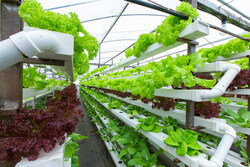
Frost & Sullivan analysis finds that the vertical farming industry is headed toward prosperity
by CM staff
The vertical farming industry will be driven by the growing need to feed the expanding world population due to limited land and water resources, says Frost & Sullivan

Photo: Frost & Sullivan.
SAN ANTONIO — A growing population, the shortage of land and water, and increasing pressure on traditional agricultural methods have led to a shift toward new farming practices like vertical farming. Frost & Sullivan’s recent analysis, Global Vertical Farming Growth Opportunities, finds that the vertical farming industry is heading in the right direction because of technological improvements and the use of renewable energy sources. The adoption of the farming-as-a-service model and the extension of vertical farming into specialized crops from leafy greens will speed up market growth in three to five years.
“The vertical farming sector remains limited to leafy greens, so companies must innovate and expand while ensuring higher margins and lower production costs,” said Smriti Sharma, Chemicals, Materials & Nutrition Program Manager at Frost & Sullivan. “It encourages vertical farming businesses to collaborate with component providers to come up with solutions since doing so will be crucial to lowering costs overall and raising yield.”
Sharma added: “Controlled environment agriculture (CEA) is an important solution to the land, water, and GHG emission challenges of conventional agriculture. Government and non-government activities are expected to expand the knowledge and adoption of vertical farming systems, particularly in areas with limited access to water and land.”
To reap the advantages of the vertical farming industry, the analysis suggests:
- Seed-manufacturing companies must invest in the research and development (R&D) of seed varieties to accelerate the development of plants that can grow in vertical farms.
- Component manufacturers should focus on the R&D of energy-efficient equipment, especially lighting and HVAC systems, to lower energy costs.
- Companies must invest in developing integrated platforms enabled by artificial intelligence (AI) and Big Data analytics to develop highly automated, self-sufficient farms.